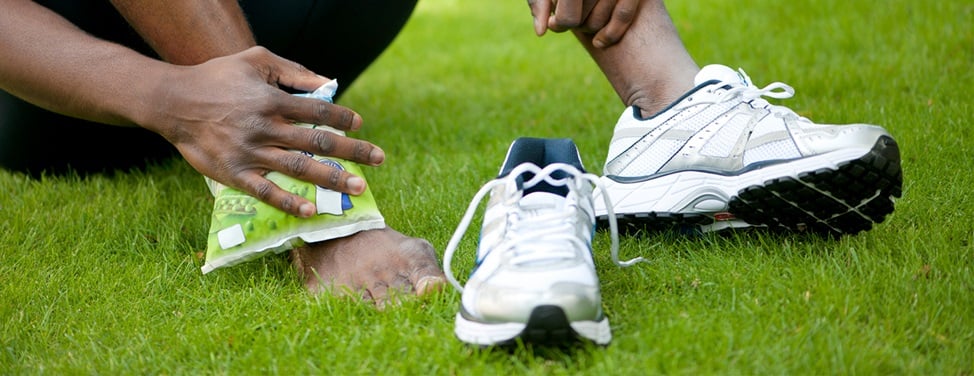Dancer's Heel

Overview
Dancer's heel, also known as posterior impingement syndrome, occurs when the tissue at the back of the ankle becomes compressed due to a bony formation at the back of the ankle. The pain may be triggered by an ankle sprain or by the tissue being trapped between the ankle and heel bone. When the soft tissue at the back of the ankle is pinched, it becomes inflamed and painful. Posterior impingement syndrome is common among ballet dancers.
Our approach to dancer's heel
To treat dancer's heel, we begin with nonsurgical treatments to reduce pain and swelling. We may also recommend working with a physical therapist who is familiar with dance injuries. If these options prove ineffective, UCSF offers surgical treatments for dancer's heel. The type of procedure we use depends on the source and location of the problem.
Our team includes highly trained orthopedic surgeons who specialize in the ankle and foot, as well as podiatrists, physical therapists and pedorthists (specialists in modified footwear and supportive devices for the lower leg). Our goals are to relieve pain and restore mobility, so patients can return to their normal lives and the activities they enjoy. We offer doctor's appointments, medical imaging and physical therapy in one convenient location.
Awards & recognition
-

Among the top hospitals in the nation
-

Best in Northern California and No. 6 in the nation for orthopedic care
Signs & symptoms
Signs and symptoms of dancer's heel may include:
- Pain at the back of the ankle
- Tenderness behind the bottom tip of the fibula (outer bone in the calf)
- Worsened pain when pointing the foot down (plantar flexion)
Diagnosis
The doctor will move your ankle to see what movements or positions cause your pain. The doctor may push your foot downward or have you rise up on your toes if a posterior impingement is suspected. The doctor will probably order X-rays if impingement is suspected. You may be asked to squat down or rise up on your toes during the X-ray. This helps show if impingement is due to bone pinching the soft tissues.
A bone scan may be recommended in select cases, such as when surgery is being considered. In general, MRI scans are not helpful for impingement problems, but they may be ordered to check for other ankle problems that could be causing your pain.
Treatments
You may be told to rest the ankle for a short time to reduce swelling and pain. A special walking boot or short-leg cast may be recommended to restrict ankle movement for up to four weeks. Mild pain medications and anti-inflammatory medicine may also be prescribed. An ice pack can also help alleviate swelling and may encourage a faster return of normal ankle movement.
Your doctor may recommend a steroid injection into the painful area, to help relieve irritation and swelling in the soft tissues that are being pinched, reducing their tendency to get pinched. Additionally, your doctor may suggest working with a physical therapist familiar with dance medicine to help you regain normal use of your ankle. Patients often progress in a series of exercises including stationary cycling, range of motion, and ankle strengthening. If nonsurgical treatments do not work, surgery may be recommended. The type of surgery will vary depending on the location and cause of ankle impingement.
UCSF Health medical specialists have reviewed this information. It is for educational purposes only and is not intended to replace the advice of your doctor or other health care provider. We encourage you to discuss any questions or concerns you may have with your provider.











